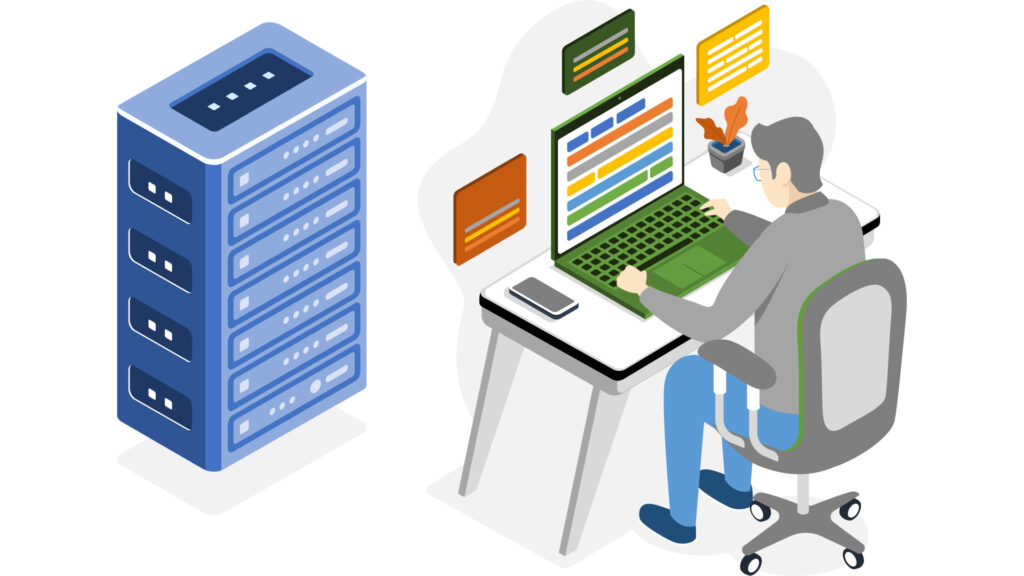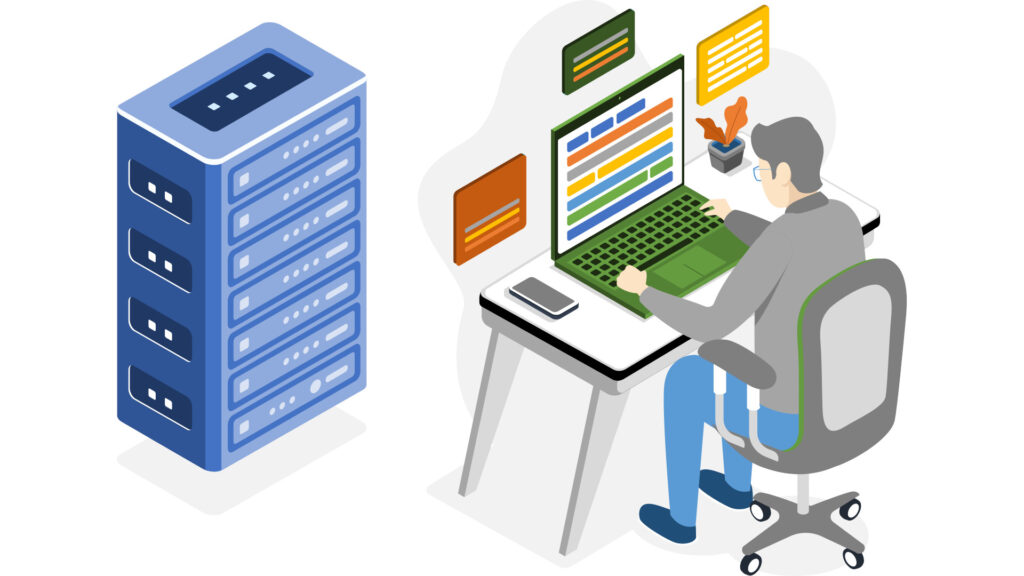
Se ci si è mai chiesti quale sia la differenza tra un PC (personal computer, computer personale) e un PC server o più brevemente un Server, o se sia possibile trasformare il proprio PC casalingo in un Server, questo articolo è rivolto proprio a questo.
Fratelli Gemelli Separati alla Nascita
A prima vista, i PC e i Server possono sembrare fratelli gemelli. Entrambi dispongono di una scheda madre, un processore, memoria RAM (Random Access Memory, Memoria ad Accesso Casuale) e spazio di archiviazione. Entrambi eseguono sistemi operativi. Allora, qual è la differenza? La risposta risiede nello scopo di ciascuno.
Un PC è come quell’amico sempre disponibile per giocare, guardare un film o aiutare a modificare un video. È progettato per l’interazione diretta con l’utente, con un’interfaccia grafica intuitiva, una scheda video per gestire grafica pesante e un monitor per visualizzare tutto in modo gradevole.
Un Server, invece, è come quello zio che non dorme mai ed è sempre al lavoro. Esegue applicazioni 24 ore su 24, 7 giorni su 7, senza molta interazione umana diretta. Il suo obiettivo è su stabilità, sicurezza ed efficienza energetica. E, nella maggior parte dei casi, non ha nemmeno bisogno di un monitor, dato che l’accesso avviene da remoto.
È Possibile Trasformare il Proprio PC in un Server?
La risposta breve è: sì, è possibile. La risposta lunga è: dipende da cosa ci si vuole fare.
Tecnicamente, non c’è nulla che impedisca di installare un sistema operativo specifico per Server sul proprio PC di casa. Se si ha un PC inutilizzato e si desidera utilizzarlo per creare un HomeLab Server (Server Domestico), questa può essere un’ottima idea. Si risparmia denaro, si riutilizza l’hardware e si imparano cose nuove. Questi Server possono svolgere molteplici funzioni, come NAS (Network-Attached Storage) per l’archiviazione centralizzata di dati, la gestione di contenuti multimediali, come film, musica e foto, rendendoli accessibili a tutti i dispositivi della casa e l’automazione della casa.
Tuttavia, se si sta pensando di gestire un sito web professionale o un negozio online, potrebbe non essere la scelta migliore. Mantenere un Server in casa può essere un incubo logistico se non ci si attrezza adeguatamente per affrontare possibili interruzioni di corrente, eventuali problemi di rete e per difendersi da attacchi informatici molto probabili. Inoltre diventa fondamentale la gestione delle copie di sicurezza (backup). Nulla di impossibile ma serve un PC adeguatamente attrezzato sia dal punto di vista software che hardware, oltre a possedere un ottima cultura informatica per gestirlo.
Le Differenze Che Fanno la Differenza
Quindi, qual è la differenza tra un PC e un Server? Esaminiamo più nel dettaglio le principali differenze tra PC e Server, considerandoli come un’unica entità integrata, comprendente sia l’hardware che il software:
- Interazione Umana: Mentre un PC è fatto per essere utilizzato direttamente da una persona, un Server è progettato per essere accessibile da remoto. Ciò significa che, nel caso del Server, l’interfaccia grafica è spesso superflua e non installata.
- Stabilità e Robustezza: I Server sono progettati per funzionare senza interruzioni, 24 ore su 24, 7 giorni su 7. Utilizzano componenti di alta qualità, realizzati per garantire durabilità ed efficienza energetica. Un PC domestico, invece, non offre lo stesso livello di affidabilità, ma per un utilizzo casalingo come Server risulta comunque adeguato.
- Sicurezza: Un Server deve essere una fortezza digitale, specialmente se è connesso a Internet. Anche i PC domestici necessitano di sicurezza, ma le minacce sono minori rispetto a un Server che può essere bersaglio di attacchi diretti.
- Ridondanza e Backup: I Server in genere hanno sistemi di ridondanza per evitare la perdita di dati. Ciò include dischi rigidi con mirroring (RAID, Redundant Array of Independent Disks, Gruppo Ridondante di Dischi Indipendenti) e backup automatici. Su un PC domestico, probabilmente ci si ricorda di fare il backup solo quando si è già perso un file importante.
In sintesi, mentre l’hardware può differire tra PC e Server, è il software che determina realmente le capacità e le funzionalità di ciascun sistema, adattandosi alle diverse esigenze degli utenti.
Fonte: https://www.laseroffice.it/blog/2023/04/03/come-configurare-un-server-domestico-con-gnu-linux/
Source: Read More


